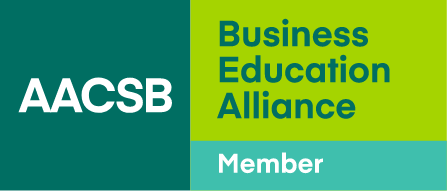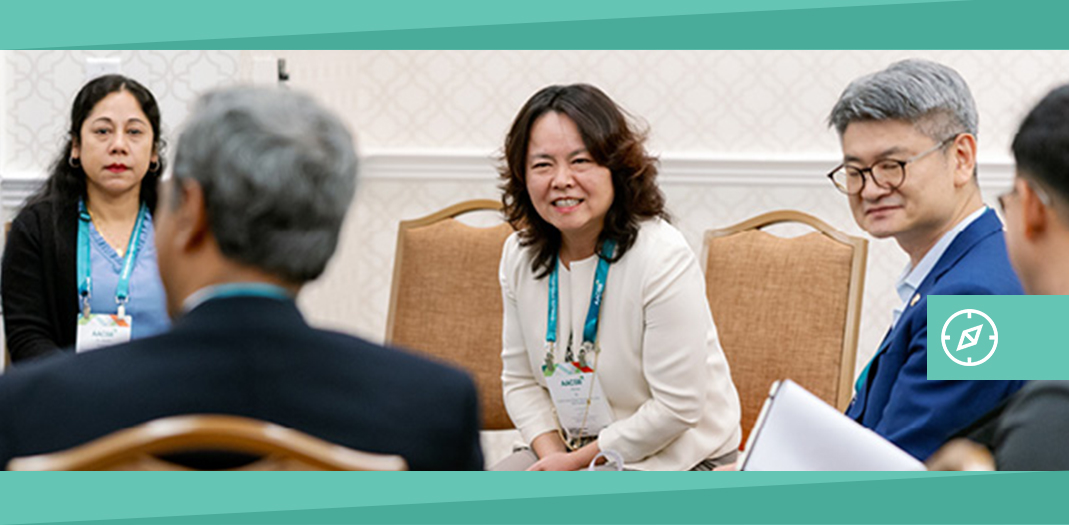Linking Course Concepts to Real-World Risk
- A forum at the SP Jain School of Global Management invited students to explore the implications of a potential U.S. dollar crisis and present their findings to faculty and an external industry expert.
- During this short-form capstone-style experience, students applied classroom theory to real-world uncertainty—without the extended timeline that traditional long-form capstones demand.
- This easy-to-scale format offers business schools a low-cost, high-impact way to integrate global perspectives, AI-supported analysis, and authentic assessment into undergraduate education.
“If the dollar weakens, what happens to your business?”
It’s the kind of question that rarely gets asked in an undergraduate economics classroom—yet it’s precisely the one that we posed to our BBA students during a live half-day forum at the SP Jain School of Global Management in Singapore.
The forum, titled “When the Dollar Falters: Regional Business Risks and Responses,” was hosted by the school’s Centre for Research in Global Business Learning (CRGBL). During the discussion, students were asked to move past GDP graphs and trade curves to examine the macroeconomic risks that affect real-world business decisions. In doing so, they connected theory to practice and emerged with sharper analytical and presentation skills.
Rethinking Macroeconomics Pedagogy
Traditional approaches to teaching macroeconomics emphasize long-run models, policy frameworks, and aggregate indicators. While foundational, these concepts often remain abstract for students unless grounded in immediate, uncertain, and relevant scenarios.
We created the forum to bridge this gap. Delivered in the style of a capstone, this learning experience was based on an April 2025 article in The Economist about a potential crisis with the U.S. dollar. The forum’s discussion linked that article’s content with the International Monetary Fund’s World Economic Outlook and current policy changes adopted by the Monetary Authority of Singapore.
Students were grouped into four teams, each assigned to view the dollar crisis through a distinct macroeconomic lens, ranging from currency exposure and supply chain disruption to investor confidence and U.S. monetary policy. Each team’s objective was to prepare a professional business presentation examining how a weakening dollar might reshape risks and strategies for companies in Singapore and across Asia. We encouraged students to use research tools supported by artificial intelligence (AI) to complete their presentations.
The audience included senior faculty members and an external guest panelist: Vikram Khanna, associate editor and senior economics correspondent at The Straits Times.
From Discussion to Application
Khanna played a pivotal role in the Dollar Crisis session. Following the student presentations, he offered a compelling macroregional analysis that broadened the classroom perspective. Drawing on his journalistic and policy expertise, he emphasized that a weaker U.S. dollar is not uniformly negative; in fact, it could enhance debt servicing ability and open new pathways of economic growth for the countries of the Association of Southeast Asian Nations (ASEAN).
In his remarks, Khanna referenced real-world developments, including the rapid expansion of Chinese brands such as BYD and Luckin Coffee in Southeast Asia, highlighting how dollar depreciation could alter competitive dynamics in the region. In addition, he discussed how traditional policy tools, such as tariffs, have failed to reduce the U.S. trade deficit, challenging students to reflect on the deeper structural imbalances driving global flows.
He drew students’ attention to evidence of the world’s shifting financial architecture, such as the emergence of the yuan as an alternative currency. He pointed out how individuals and businesses are increasingly using OCBC, a Singaporean financial services company, and Alipay, a digital payment platform, instead of the popular international money transfer system SWIFT. Khanna’s input grounded the session in present-day business and policy realities, elevating the learning experience far above a typical classroom discussion.
The forum’s live, unscripted interaction provided students with a richer understanding of macrofinancial innovation and the opportunity to test their analytical ideas against real-world viewpoints.
After Khanna concluded his remarks, senior faculty members from SP Jain’s Singapore and Dubai campuses shared closing observations with the student groups. Speakers included the school’s dean Gary Stockport, CRGBL chair Veena Jadhav, and assistant dean Bhanu Ranjan.
Overall, the forum mimicked a strategy roundtable. Its live, unscripted interaction provided students with a richer understanding of macrofinancial innovation. They had the opportunity to test their analytical ideas against real-world viewpoints, prompting several follow-up questions during the Q&A.
Although students’ participation in the forum was not formally graded, faculty members offered informal feedback and advice during and after the presentations, underscoring both the academic rigor and practical value of the session.
In an era shaped by generative AI (GenAI), challenges to traditional assessment, and global economic uncertainty, this kind of experiential learning allowed students to engage critically and collaborate effectively. It required them to apply economic thinking beyond textbook boundaries.
Learning and Innovation in Action
What made this exercise transformative wasn’t just the content—it was the intentional blending of macroeconomic concepts with applied business analysis. Students had to demonstrate the following skills as they explored a wide range of questions:
- Scenario thinking: What if the dollar weakens by 15 percent? What would this mean for trade costs, investor behavior, or contract enforcement?
- Business alignment: How would a retail firm in Singapore, an ASEAN-based exporter, or a regional investor respond to this shift?
- Impact mapping: How could concepts such as crowding out, interest rate parity, and policy spillovers be translated into real-world implications?
- Data synthesis: How can AI- and human-generated research be used to distinguish between signal and noise in news, policy, and institutional briefings?
The forum’s structure was tightly aligned with the learning goals of the CRGBL, which focuses on cultivating critical thinking, global readiness, and business literacy in a volatile world.
Deeper Engagement, Greater Confidence
Students’ final presentations were nuanced, collaborative, and accessible to a nonspecialist business audience. Their analyses led to insightful conclusions that went well beyond what a traditional written assessment might have yielded.
For instance, one team highlighted how invoicing practices (such as dual-currency contracts) could buffer firms from dollar-linked volatility—an idea based in course content but deepened through external research. Another group evaluated how Singapore-based manufacturers might restructure regional sourcing to avoid pass-through inflation from U.S.-priced inputs.
Other teams mapped the vulnerabilities of a local tech company across foreign exchange contracts, traced the link between investor sentiment and cross-border capital flight, and analyzed how U.S. monetary easing could create both financing opportunities and inflation risks for regional firms.
Students reported feeling more confident discussing economic news, applying models to live data, and preparing business-style slide decks and narratives.
One particularly striking insight emerged from a team focused on financial flows. Students identified how investor sentiment, shaped by dollar weakness, could affect both credit access and regional business expansion, linking macro shifts directly to boardroom-level decisions.
These outcomes reflect how well the forum triggered a deeper level of classroom engagement. Students reported feeling more confident discussing economic news, applying models to live data, and preparing business-style slide decks and narratives. Many also cited the experience as their first exposure to thinking like a strategy team inside a real firm.
The Benefits of Active Learning
These outcomes were made possible by the collaborative simulation format, where students not only analyzed data and theory, but also defended their ideas before a live panel. The real-time forum required them to anticipate questions, justify assumptions, and consider political trade-offs. Rather than simply memorizing exchange rate theory, students applied it in the context of firm-level resilience and strategic choice.
At the end of the forum, Khanna and the participating faculty expressed appreciation for the confidence and the quality of analysis that the undergraduate students demonstrated. They noted that the student teams displayed commendable depth in macroeconomic reasoning and real-world application, despite being at such an early stage of academic development.
Faculty observers also recognized how well this kind of scenario-based, interdisciplinary learning—especially in a high-engagement setting with external experts—encouraged broader reflection and a practical synthesis of macroeconomic tools. This format, they noted, prompted students to engage with uncertainty not as a constraint, but as a strategic variable. This is an outcome rarely achieved through passive learning.
As Khanna concluded, “These students weren’t just studying macro—they were applying it.”
The Appeal of Short-Form Learning
What was especially appealing to BBA students about this forum was its abbreviated structure, which mimicked a capstone-style course. They appreciated having an opportunity to apply classroom theory to real-world uncertainty without the extended timeline, simulation-based deliverables, or research-intensive reports that traditional long-form capstones demand.
This concentrated preparation cycle gave students a strong sense of ownership over the process and a sense of urgency in their analyses. Students reported that the focused, high-stakes nature of the decision-making process, combined with the accountability of presenting to an external expert, made the experience both challenging and rewarding.
Incorporating GenAI into the preparatory stage of this experience further enriched learning outcomes. Students were encouraged to use AI tools to explore global business trends, generate framing questions, and simulate scenario-based responses.

Professor Muniza Askari stands at center with undergraduate students who took part in an interactive forum that explored the implications of a potential U.S. dollar crisis. (Photo courtesy of the SP Jain School of Global Management)
For example, some teams used GenAI to compare historical currency volatility or to model policy reactions based on IMF forecasts. These tools supported ideation and synthesis without replacing original thinking, which was especially helpful for undergraduate learners navigating complex macroeconomic interactions for the first time.
Moving forward, we see strong potential to expand AI-supported brainstorming, real-time data analysis, and economic storytelling in our curricula. We can use the technology to help students grasp dynamic macroeconomic concepts such as policy spillovers, currency exposure, and investor sentiment. Integrating GenAI in this structured and guided manner complements traditional economic reasoning and aligns with the institution’s goals for assessing its students’ innovative skills.
Lessons for Educators
In today’s world of geopolitical shocks and rapid policy change, students need more than theory. They need economic intuition, adaptability, and analytical synthesis. Forums such as this are low-cost, high-impact, and easily replicable, making them a powerful way to integrate global perspectives into foundational courses.
This format also offers a blueprint for redefining classroom assessments, giving faculty a way to transition from closed-book exams to open-format simulations that require students to generate knowledge, rather than merely recall it.
This format offers faculty a way to transition from closed-book exams to open-format simulations that require students to generate knowledge, rather than merely recall it.
This approach is particularly timely given the rising challenges of AI-enabled plagiarism and students cheating on assessments. As institutions grapple with upholding academic integrity in the GenAI era, presentation-based evaluations grounded in real-world complexity provide a meaningful alternative. Students not only learn to apply theoretical concepts, but also engage in original analysis, defend their positions, and present their findings to mixed audiences, in ways that bridge the gap between authentic learning and verifiable performance.
AACSB’s commitment to innovation, societal impact, and global business education aligns naturally with integrating intensive forums into curricula. In the field of economics, such initiatives offer a lens into the future of teaching—one where currency shocks, policy moves, and regional trade are no longer abstract, but alive in student inquiry.
Expanding the Format Into a Case Jam
Given the strong student engagement and positive faculty feedback, we plan to replicate and expand this format in upcoming academic cycles. At the undergraduate level, the Dollar Crisis forum will serve as a model for incorporating real-world policy shifts into structured student debates.
For example, in September 2025, this format will evolve into an interinstitutional Case Jam, for which we are inviting participation from business and economics students across Singapore-based universities. Teams will engage with a regionally relevant macroeconomic case and present their analyses before a panel of academics and industry experts.
This next iteration will scale the experience and introduce external benchmarking. In the process, it will further embed institutional goals around experiential, interdisciplinary, and AI-aware pedagogy.
Encouraged by the success of our pilot, we believe that short-form, high-impact forums can provide students with a deeper applied understanding of complex global business environments. For institutions seeking to integrate practical economic thinking into their core undergraduate curriculum, this model is a scalable, intellectually rich, assessment-light, and easy-to-implement option that complements traditional instruction in a myriad of valuable ways.





